No Greek myth: Assyrtiko can be really great
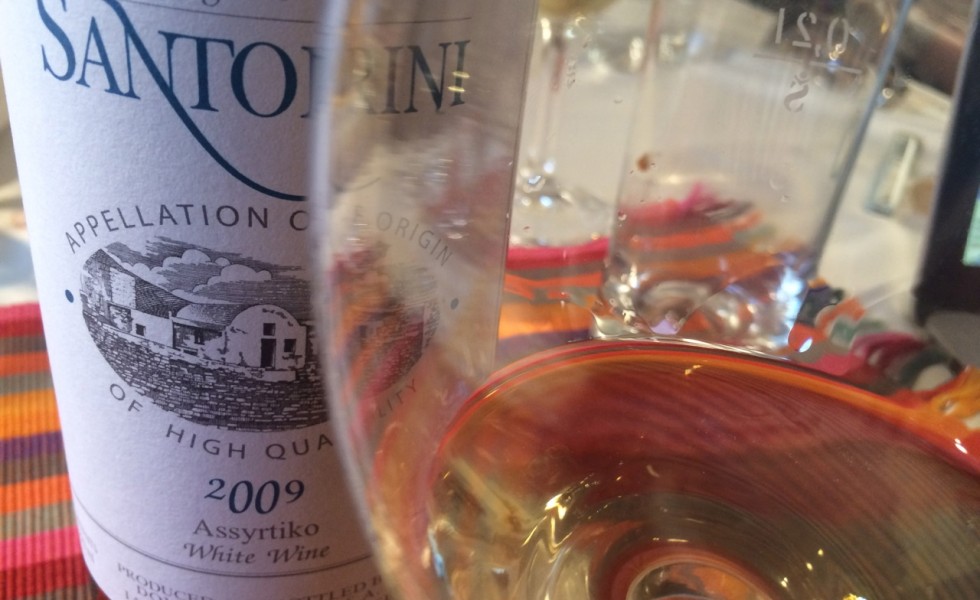
By Panos Kakaviatos for wine-chronicles.com
28 June 2015
Wines in bold, I liked in particular. When red and bold, even more. When underlined, too, that means top of the pops!
It was great to meet with a dear friend in Frankfurt, who loves Greek wine. Spyros is a #winelover who is half German and half Greek. He grew up in Greece before studying and then working in investment banking in London. Since 2013, he has been working in Frankfurt. Obviously, the current situation in Greece was a subject of conversation as we met with some of his friends over dinner with plenty of Greek wines, mainly Assyrtiko from Santorini.
Spyros and his Taiwanese wife organize wine dinners with friends on a monthly basis, and it was a great pleasure to join them. Our dinner party included a couple from Beijing who live and work between Beijing and London and a Greek doctor based in Frankfurt.
Assyrtiko is a famous white wine grape indigenous to the gorgeous and volcanic island of Santorini, which is known for its amazing sunsets, among other things. Spyros has traveled to the island and knows some of the top winemakers there.
Over dinner, he poured seven wines blind over the course of the dinner – a first flight of two wines from two different vintages, and a second flight of five wines from the 2009 vintage – which began with a superb Comté cheese-based tart that Yen-Ting prepared.
Most praise Assyrtiko for yielding mineral driven, crisp and dry whites, with citrus and saltiness as common flavors. What I appreciated from the dinner that Spyros organised was how different winemakers and winemaking lend the Assyrtiko multiple and interesting expressions, while maintaining the common saline and crispy aspect.
Decanter will be publishing my article on the white wines of Greece in their August issue this year, so it was really great to taste these wines. We had such a good time, that we decided to do this video afterwards.
Famous Santorini brands were a highlight of the dinner, including Sigalas, Gaia and Hatzidakis. Perhaps the most interesting Assyrtiko was the Hatzidakis Nikteri 2009. With a whopping 15% alcohol and aged 6 months in oak, it was marvelously original and pulsing with mineral driven flavors, even if almost over imposing. His wife prepared a delicious coq au vin style chicken but with an apple cider reduction sauce so the flavors were pronounced, including roasted potatoes perfectly crispy on the outside. Yet the Hatzidakis almost overpowered the main course! I felt as if it were a meal in and of itself.
Oaky issues …
Based on this dinner tasting, I felt – yet again – that sometimes oak treatment is too heavy handed in Greek wines. For example, the Sigalas barrel-aged 2004 Assyrtiko came across as too Sherry like for my tastes even if it had its virtues. On the other hand, the 2009 non barrel version (or, classic) proved perhaps the best of all the wines we had tried over dinner. By the same token, Gaia’s Thalassitis, without oak, was more successful to me than the version with the oak – both coming from the 2009 vintage.
Flight One – 2004 and 2008 (tasted blind)
First wine. Dark color. Hazelnut. Oxidation on the nose. Slightly hard on the palate. Sherry aspect. Warmth. Very old vines. 100 year old vines and more. Concentrated and long. Salinity. For me a bit past due although the high acidity lent it continued zing with notions of lemon peel. Old lemon peel. Slightly bitter finish from the barrels.
Sigalas Santorini Barrel-aged Assyrtko 2004. Aged in French oak barrels for 6 months. 14% alcohol.
Second wine. Not as dark a color as the above. Slight reductive matchstick aspect initially but then it opens up with a bit of air. White stone aspect and medium bodied. Notes of citrus and grapefruit with a medium finish but curiously muted in expression. Fermented with wild yeasts in both stainless steel and in French and American oak barrels, after undergoing a 12-hour cold pre-fermentation skin contact maceration. Spyros said that the wine tasted more vibrant in its youth…
Assyrtiko by Gaia Wild Ferment 2008. 13.5% alcohol.
Flight Two – all 2009 Assyrtikos / five wines
While the first flight left me somewhat perplexed, I found much to love in this second flight…
First wine. Lovely pure citrus aspects. Similar to wet stone, pebbles after a rain. At first, just a bit cloying. But with time – over dinner – a salt and mineral aspect take over. Is there a hint of acacia on the palate? With time, it gets better and better – less cloying and showing fruit and more expression on the medium bodied palate, that is rather juicy if not particularly brimming with excitement.
Thalassitis by Gaia. According to the website, in antiquity, mixing wine with sea water (“Thalassa” in Greek) was a very well known practice applied to give therapeutic virtues to wine. The wines resulting from this process were called “Thalassitis Oenos” (sea-originated wine). This is not a blend of wine and seawater, but a great name nonetheless. Fermented in stainless steel. 13% alcohol.
Second wine. Slightly lighter color. Brighter nose, more pronounced, right from the start. Lime like, juicy white stone fruit too. The palate has more energy and thrust. More interesting. Clean and crisp and tasty. Citrus and mineral. Wet stone here as well. Makes first wine seem monotonous. Medium bodied and long and refined finish. Bravo!
Sigalas’ classic wine from the 2009 vintage like the others and just lovely! The vines are at least 40 years old – and the owner recommends cellaring for about two years before enjoying it for at least seven years. 13.3% alcohol. Perhaps the wine of the evening, although read on …
Third wine. More golden color, looks more viscous. Slight oxidation. Hazelnut aspects. Honeyed melon but over-oaked to me, masked by oak tannins that are bitter on the finish.
Thalassitis by Gaia but this time… barrel fermented and aged in oak. 100% Assyrtiko 13.5% alcohol. What a difference a barrel makes ;-).
Fourth wine. Rich and smoky. Has some warmth too from the alcohol. And it has oak influence yet again and seems just somewhat bitter. It gets better over time in glass however, and I appreciated the full bodied mid palate.
Assyrtiko by Gaia Wild Ferment. Same wine as the number two wine in the first flight, but 2009. 13%
Fifth wine. Rich and savory – and full bodied. Large scaled. Over the top? One dinner guest thought that it may have been off dry. It was not. The 15% alcohol gave it such a large scale that you could feel a touch of heat and richness. But the extract and concentration were very impressive, with a concentrated saline aspect along with much fruit expression. The 6 months in oak comes across as integrated.
Hatzidakis Nikteri. 15%. Made from slighly over-matured grapes from selected vineyards of the island at an altitude of 100 to 300 meters and picked at night, hence the name Nikteri (at night).
A couple of reds, too.
In addition to the Assyrtiko wines, we also enjoyed two reds. Thanks to Jürgen Steinke for providing us with an excellent Greek Cabernet Sauvignon, the 1998 Christos Kokkalis Cabernet Sauvignon Trilogia from , which exuded complex aromatics, not too far from maturing claret. Very Cabernet character – and with class. A touch of cedar, cassis and dark fruits, a bit stewed, lovely herbal notes and slight sweetness perhaps gave it away as coming from a sunnier climate. There is adequate structure along with a touch of warmth. The body is medium plus, even if the finish somewhat attenuated. But let’s not be too nitpicky. This wine could stand up to very good Bordeaux, easily. And not too pricey. 13.5% alcohol.
We ended the evening with a rather rare sweet wine, made by Hatzidakis, the Voudomato 2002 vintage, an ancient variety with most plantings in Santorini. It was rich, this slightly dark garnet colored yet transparent wine, and I thought the alcohol was 20 degrees, but it was closer to 11. Loads of residual sugar seemed balanced by acidity. I was a bit tired by the time we got to this wine, but it was very flavorful, with an almost Tawny Port aspect, a certain nuttiness. It exuded dry fruit, fig, potpourri aromas and flavors as well as a touch of volatile acidity. The palate texture was rather soft and agreeable. Quite a bit of deposits were found at the bottom of the bottle.
Spyros only has two other bottles of this rather rare wine – its yields absurdly low, apparently – and he said that he will open his second bottle “in 20 years and enjoy the third one when I am 70.”
I look forward to sharing wine again with Spyros and other friends. Our thoughts are with the Greek people and what looks to be a very difficult road ahead. In the meantime, it is very important to enjoy good wines and if spending money on Greek wines can help the economy just a little bit, so much the better.
 Wine Chronicles
Wine Chronicles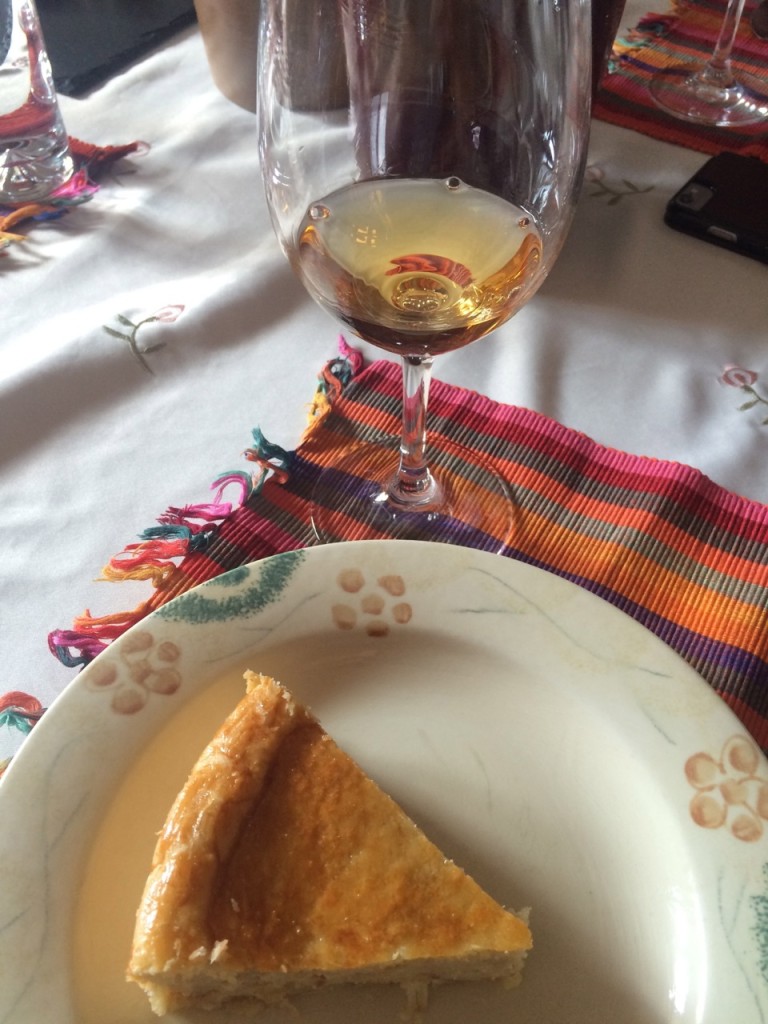
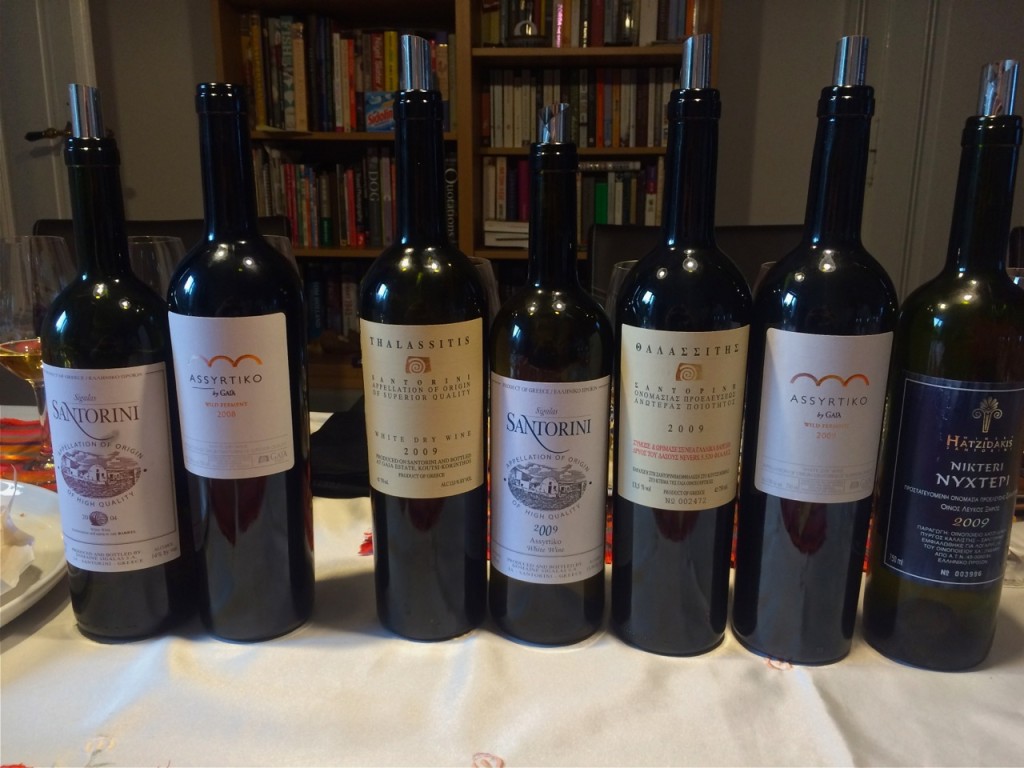
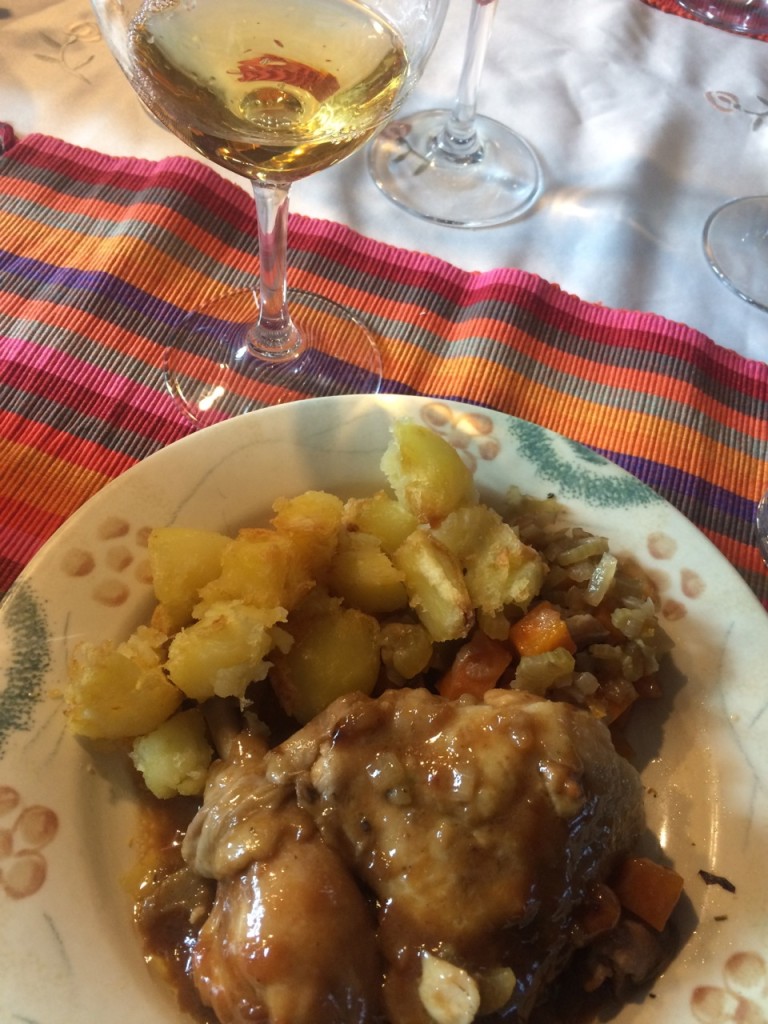
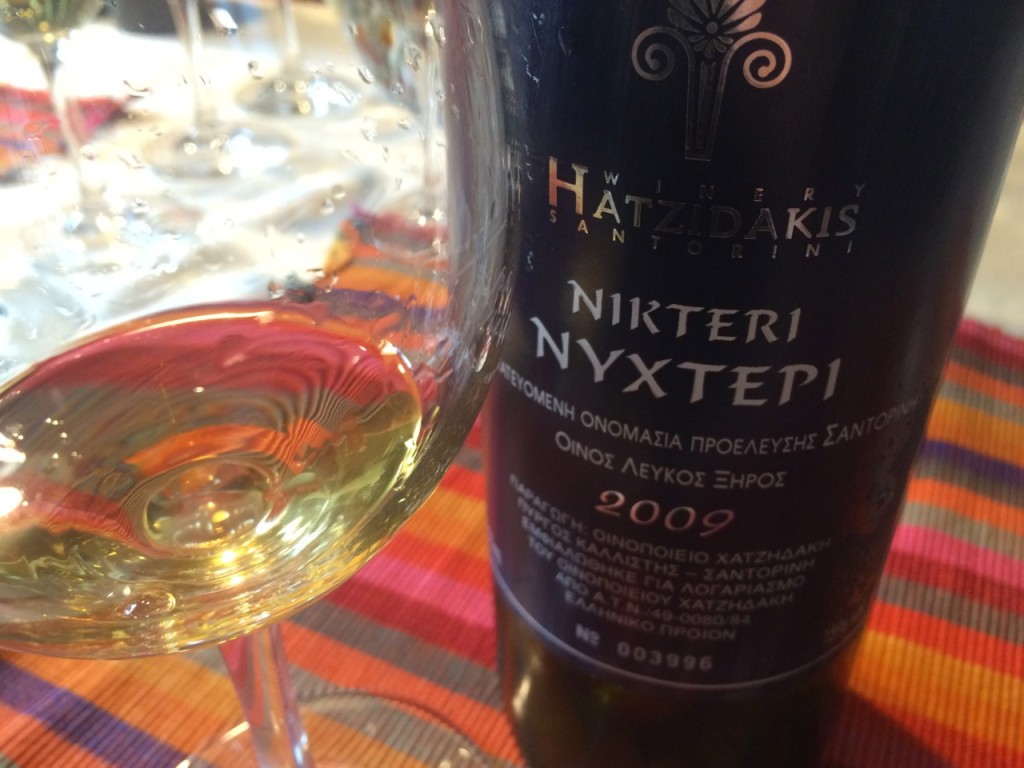
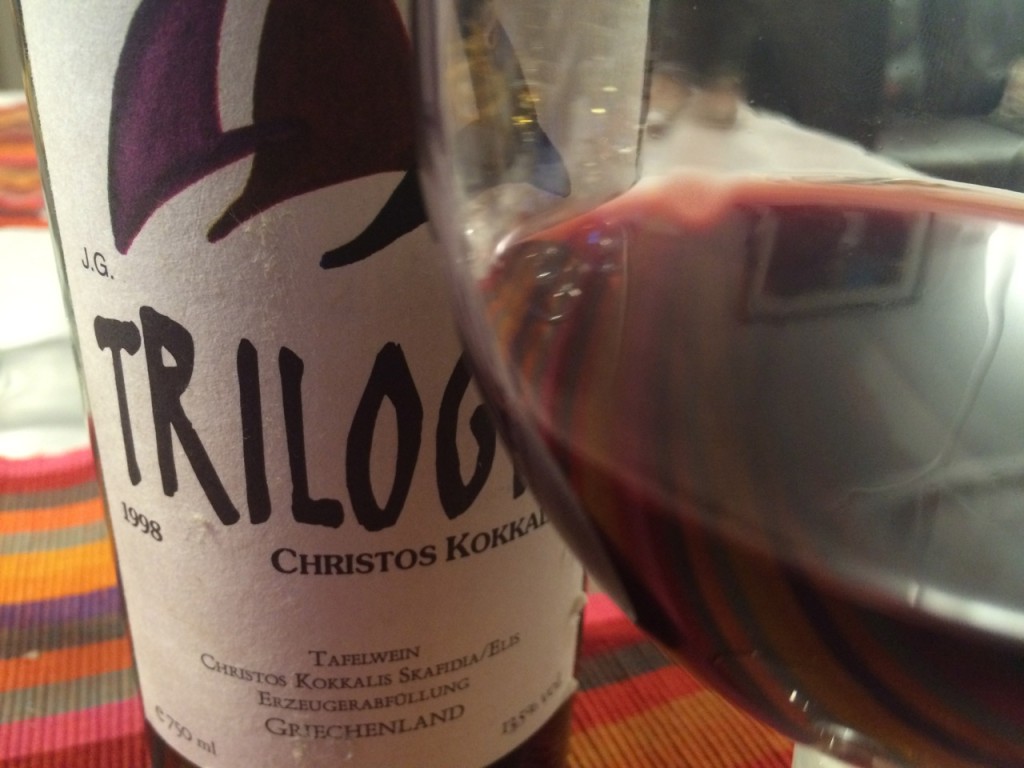
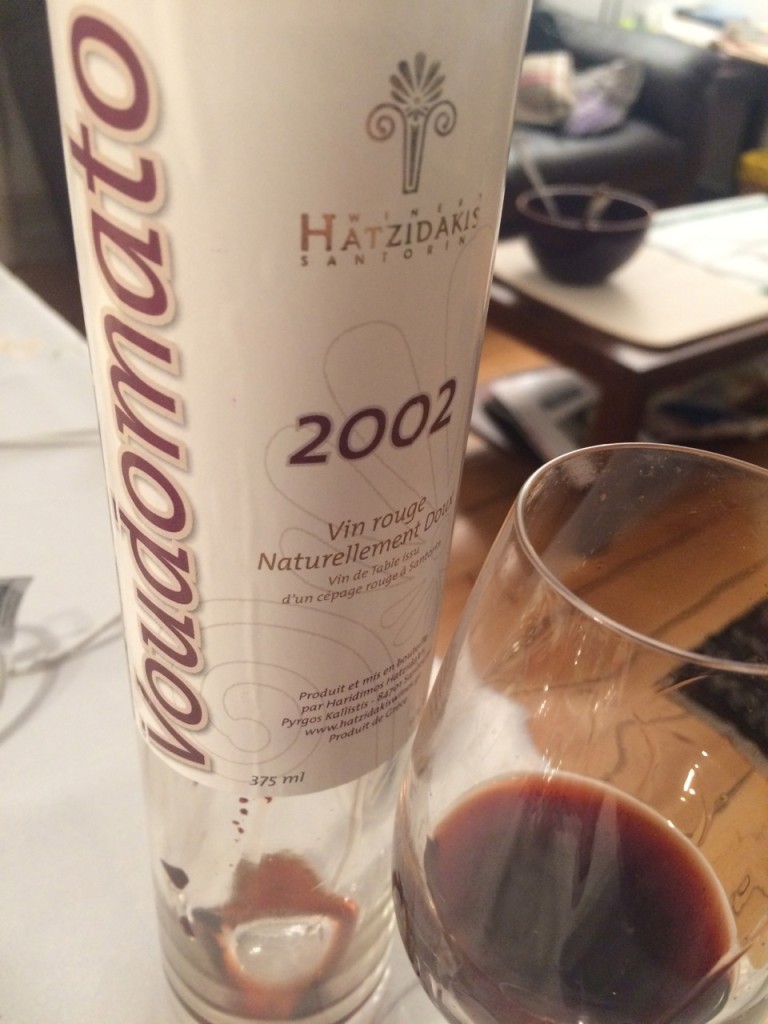
Share This